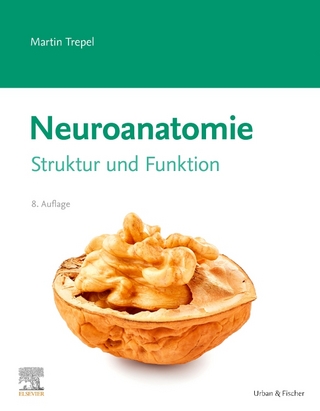Principles of Cancer Genetics
Springer (Verlag)
978-94-017-7482-6 (ISBN)
- Titel erscheint in neuer Auflage
- Artikel merken
Fred Bunz, M.D., Ph.D is a native of Long Beach, New York. He attended Stony Brook University and graduated from its Medical Scientist Training Program. His doctoral research in the enzymology of human DNA replication was conducted at Cold Spring Harbor Laboratory. Dr. Bunz completed a postdoctoral fellowship in Cancer Genetics at The Johns Hopkins University and the Howard Hughes Medical Institute, and now heads a laboratory at the Sidney Kimmel Comprehensive Cancer Center at Johns Hopkins that is focused on understanding the effects of DNA damage on cancer cells and normal cells. He lives in Baltimore with his wife, two children, a cat, and an Old English Sheepdog.
Preface
Chapter 1: The Genetic Basis of Cancer
The cancer gene theory
Cancers are invasive tumors
Cancer is a unique type of genetic disease
What are cancer genes and how are they acquired?
Mutations alter the human genome
Genes and mutations
Single nucleotide substitutions
Gene silencing is marked by cytosine methylation: epigenetics
Environmental mutagens, mutations and cancer
Inflammation promotes the propagation of cancer genes
Stem cells, Darwinian selection and the clonal evolution of cancers
Selective pressure and adaptation: hypoxia and altered metabolism
Multiple somatic mutations punctuate clonal evolution
Tumor growth leads to cellular heterogeneity
Tumors are distinguished by their spectrum of driver gene mutations and passenger gene mutations
Colorectal cancer: a model for understanding the process of tumorigenesis
Do cancer cells divide more rapidly than normal cells?
Germline cancer genes allow neoplasia to bypass steps in clonal evolution
Cancer syndromes reveal rate-limiting steps in tumorigenesis
The etiolog
ic triad: heredity, the environment, and stem cell division
Understanding cancer genetics
Chapter 2: Oncogenes
What is an oncogene?
The discovery of transmissible cancer genes
Viral oncogenes are derived from the host genome
The search for activated oncogene
s: the RAS gene family
Complex genomic rearrangements: the MYC gene family
Proto-oncogene activation by gene amplification
Proto-oncogenes can be activated by chromosomal translocation
Chromosomal translocations in liquid tumors
Chronic myeloid leukemia and the Philadelphia chromosome
Oncogenic activation of transcription factors in Prostate cancer and Ewing’s sarcoma
Oncogene discovery in the genomic era: mutations in PIK3CA
Selection of tumor-associated mutations
Multiple modes of proto-oncogene activation
Oncogenes are dominant cancer genes
Germline mutations in RET and MET confer cancer predisposition
Proto-oncogene activation and tumorigenesis
Chapter 3: Tumor Suppressor Genes
What is a tumor suppressor gene?
The discovery of recessive cancer phenotypes
Retinoblastoma and Knudson’s two-hit hypothesis
Chromosomal localization of the retinoblastoma gene
The mapping and cloning of the retinoblastoma gene
Tumor suppressor gene inactivation: the second ‘hit’ and loss of heterozygosity
Recessive genes, dominant traits
APC inactivation in inherited and sporadic colorectal cancers
TP53 inactivation: a frequent event in tumorigenesis
Functional inactivation of p53: tumor suppressor genes and oncogenes interact
Mutant TP53 in the germl
ine: L
i Fraum
eni syn
drome
Ga
ins-of-function caused by cancer-associated mutations in TP53
Cancer predisposition: allelic penetrance, relative risk and the odds ratio
Breast cancer susceptibility: BRCA1 and BRCA2
Genetic losses on chromosome 9: CDKN2A
Complexity at CDKN2A: neighboring and overlapping genes
Genetic losses on chromosome 10: PTEN
SMAD4 and the maintenance of stromal architecture
Two distinct genes cause neurofibromatosis
From flies to humans, Patched proteins regulate developmental morphogenesis
von Hippel-Lindau disease
NOTCH1: tumor suppressor gene or oncogene?
Multiple endocrine neoplasia type 1
Most tumor suppressor genes are tissue-specific
Modeling cancer syndromes in mice
Genetic variation and germline cancer genes
Tumor suppressor gene inactivation during colorectal tumorigenesis
Inherited tumor suppressor gene mutations: gatekeepers and landscapers
Maintaining the genome: caretakers
Chapter 4: Genetic Instability and Cancer
What is genetic instability?
The majority of cancer cells are aneuploid
Aneuploid cancer cells exhibit chromosome instability
Chromosome instability arises early in colorectal tumorigenesis
Chromosomal instability accelerates clonal evolution
Aneuploidy can result from mutations th
at directly im
pact mitosis
STAG2
and
the cohesion
of sister chromatids
Other genetic and epigenetic causes of aneuploidy
Transition from tetraploidy to aneuploidy during tumorigenesis
Multiple forms of genetic instability in cancer
Defects in mismatch repair cause hereditary nonpolyposis colorectal cancer
Mismatch repair-deficient cancers have a distinct spectrum of mutations
Defects in nucleotide excision repair cause xeroderma pigmentosum
NER syndromes: clinical heterogeneity and pleiotropy
DNA repair defects and mutagens define two steps towards genetic instability
Defects in DNA crosslink repair cause Fanconi anemia
A defect in DNA double strand break responses causes ataxia-telangiectasia
A unique form of genetic instability underlies Bloom syndrome
Aging and cancer: insights from the progeroid syndromes
Instability at the end: telomeres and telomerase
Overview: genes and genetic stability
Chapter 5: Cancer Genomes
Discovering the genetic basis of cancer: from genes to genomes
What types of genetic alterations are found in tumor cells?
How many genes are mutated in the various types of cancer?
What is the significance of the mutations that are found in cancers?
When do cancer-associated mutations occur?
How many different cancer genes are there?
How many cancer genes are required for th
e development
of cancer?
Cance
r genetics sha
pes our understanding
of metastasis
Tumors are genetically heterogenous
Beyond the exome: the ‘dark matter’ of the cancer genome
A summary: the genome of a cancer cell
Chapter 6: Cancer Gene Pathways
What are cancer gene pathways?
Cellular pathways are defined by protein-protein interactions
Individual biochemical reactions, multistep pathways, and networks
Protein phosphorylation is a common regulatory mechanism
Signals from the cell surface: protein tyrosine kinases
Membrane-associated GTPases: the RAS pathway
An intracellular kinase cascade: the MAPK pathway
Genetic alterations of the RAS pathway in cancer
Membrane-associated lipid phosphorylation: the PI3K/AKT pathway
Control of cell growth and energetics: the mTOR pathway
Genetic alterations in the PI3K/AKT and mTOR pathways define roles in cell survival
The STAT pathway transmits cytokine signals to the cell nucleus
Morphogenesis and cancer: the WNT/APC pathway
Dysregulation of the WNT/APC pathway in cancers
Notch signaling mediates cell-to-cell communication
Morphogenesis and cancer: the Hedgehog pathway
TGF-/ SMAD signaling maintains adult tissue homeostasis
MYC is a downstream effector of multiple cancer gene pathways
activation is triggered by damaged or incompletely
replicated chromosom
es
p53 is controlled b
y protein kinases enc
oded by
tumor suppressor genes
p53 induces the transcription of genes that suppress cancer phenotypes
Feedback loops dynamically control p53 abundance
The DNA damage signaling network activates interconnected repair pathways
Inactivation of the pathways to apoptosis in cancer
RB1 and the regulation of the cell cycle
Several cancer gene pathways converge on cell cycle regulators
Many cancer cells are cell cycle checkpoint-deficient
Chromatin modification is recurrently altered in many types of cancer
Summary: putting together the puzzle
Chapter 7: Genetic Alternations in Common Cancers
Cancer genes cause diverse diseases
Cancer incidence and prevalence
Lung cancer
Prostate cancer
Breast cancer
Colorectal cancer
Endometrial cancer
Melanoma of the skin
Bladder cancer
Lymphoma
Cancers in the kidney
Thyroid cancer
Leukemia
Cancer in the pancreas
Ovarian cancer
Cancers of the oral cavity and pharynx
Liver cancer
Cancer of the uterine cervix
Stomach cancer
Brain tumors
Chapter 8: Cancer Genetics in the Clinic
The uses of genetic information
Elements of cancer risk: carcinogens and genes
Identifying carriers o
f germline cancer genes
Cance
r genes as biomarkers of ear
ly stage malignancies
Cancer
genes as biomarkers f
or diagnosis, prognosis and recurrence
Conventional anticancer therapies inhibit cell growth
Exploiting the loss of DNA repair pathways: synthetic lethality
On the horizon: achieving synthetic lethality in TP53-mutant cancers
Molecularly targeted therapy: BCR-ABL and imatinib
Clonal evolution of therapeutic resistance
Targeting EGFR mutations
Antibody-mediated inhibition of receptor tyrosine kinases
Inhibiting Hedgehog signaling
A pipeline from genetically-defined targets to targeted therapies
Neoantigens are recognized by the immune system
The future of oncology
Index
| Erscheinungsdatum | 12.02.2016 |
|---|---|
| Zusatzinfo | 29 Illustrations, color; 109 Illustrations, black and white; XII, 343 p. 138 illus., 29 illus. in color. |
| Verlagsort | Dordrecht |
| Sprache | englisch |
| Maße | 155 x 235 mm |
| Gewicht | 7209 g |
| Themenwelt | Medizin / Pharmazie ► Medizinische Fachgebiete ► Onkologie |
| Studium ► 1. Studienabschnitt (Vorklinik) ► Anatomie / Neuroanatomie | |
| Studium ► 2. Studienabschnitt (Klinik) ► Humangenetik | |
| Schlagworte | Cancer • genetic instability • Genetics • Oncogenes • tumor suppressor genes |
| ISBN-10 | 94-017-7482-X / 940177482X |
| ISBN-13 | 978-94-017-7482-6 / 9789401774826 |
| Zustand | Neuware |
| Informationen gemäß Produktsicherheitsverordnung (GPSR) | |
| Haben Sie eine Frage zum Produkt? |
aus dem Bereich





